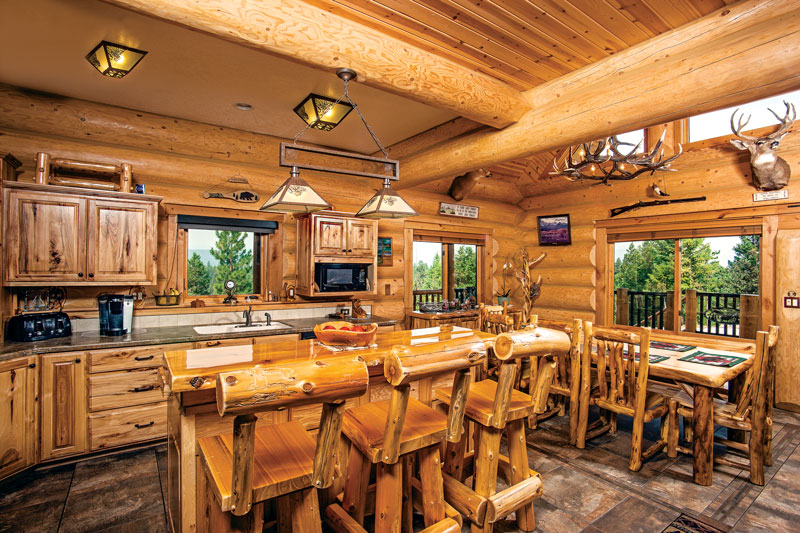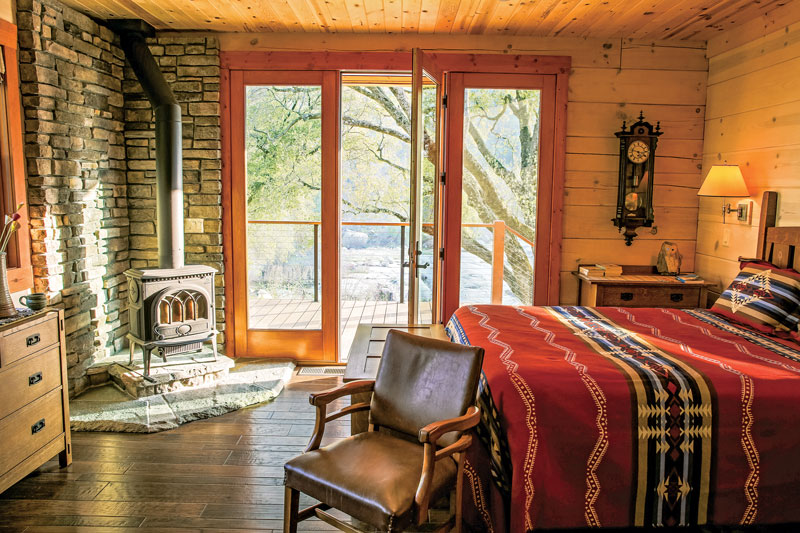
Throughout the design process, the exterior of your log home certainly gets a lot of attention. You make a myriad of decisions concerning how the outside walls will look, how the corners are notched, the stain and more. You'll think about the way the home will fit in with the site's surroundings and how it will look as you pull into your new driveway. What about the actual inside? When you walk through your front door, what do you want to see?
When it comes to interior walls, the planning process can be just as involved as it is for the home's exterior. The decisions may at times seem never-ending, but don't run out of steam. The hard work is worth it. If you research your options and enlist experts to help along the way, every last wall will complete your picture of the log home dream.
Inside Scoop
Of course, all interior walls are not the same. Some serve as perimeter walls, forming the outside box of the house, while others simply act as partitions dividing up the space inside. Unless you choose to live warehouse-style in one big room, your home will be a combination of both. Your interior options all hinge on whether you want your home to have a full-log or half-log system.
In full-log construction, solid logs are stacked to form the structural frame. In other words, the home, no matter the size, is formed where the logs show on both the outside and inside of all structural walls. With a full-log system, you can choose a variety of log shapes, depending on what style suits your preference and interior decorating style. Round logs convey a bold sense of warmth. Many log home shoppers like how the round surfaces need few embellishments to enhance their innate architectural interest and appeal. Or, consider another option. Homes with logs that are square or even D-shaped (round on the outside and flat on the inside) boast the advantage of having rich color and wood grain while offering more decorating versatility due to flat interiors on which you can easily place artwork. It all depends on how you want your decorating canvas to begin.
If, instead of a full-log system, you decide to build a half-log system, your home will have logs on the outside, but conventional framing on the inside. This presents infinite interior possibilities. A growing number of companies offer packages in which full logs are split in two with insulation running between the halves. According to Wilderness Log Homes regional sales manager Jennifer Bickelhaupt, buyers choose this option for its energy efficiency and easy plumbing and wiring. "Plus, you aren't limited to every perimeter interior wall being log," she says, explaining that the interior half logs can be absent if desired. Most buyers, though, want the interior log look in what Jennifer calls "focus rooms," such as a great room or dining room.

Color-Coded
Whether the logs on the walls are half or full, the question, "What color?" inevitably comes into play. Do you want the logs to be light or dark? What kind of sunlight comes into the room? What stain will look best with your decorating style?
Architect Tab Bonidy, owner of TAB Associates near Vail, Colorado, says his log home clients often request log walls in rooms like libraries or living rooms with stone fireplaces. The logs are often hand-peeled, and for stain, he sees a trend toward a medium or dark color. When the logs are skip-peeled, Tab usually recommends a light stain, a natural choice, he says, to complement the bits of exposed bark. Many experts suggest that home owners choose a stain that errs on the side of being too light, believing that it's better to add more color later than to be disappointed by an unexpectedly dark shade.
Color isn't the only reason to apply a log finish. Terry Hofrichter, general manager of the western division of Perma-Chink, points out that an interior finish makes the logs easier to clean and keeps odors, like smoke and kitchen grease, from seeping into the wood. It also staves off the chance of fading. "The natural effect of daylight is that if you hang a picture on a wall with bare wood, when you take it down you'll see a square," he cautions. Many log home-specific products can add both color and protection to interior walls.

Without the Wood
What about walls without logs? How can they enhance log home dwellings? Most enlist the help of drywall, a common flat surface also called gypsum wallboard. Drywall can accept a variety of paint techniques; however, designers comment that one popular in log homes today is "skip trowel."
Carol Nelson, owner of Carol Nelson Design in Kalispell, Montana, says this technique adds depth and texture to a wall. Color-imbedded plaster or drywall mud is hand-applied with a trowel, producing a Tuscan look. According to Carol, popular paint shades are warm tones like gold and cream because they are in the same color scheme as logs. "It's better if the non-log walls aren't so white," she says. "It makes the entire area a smoother transition from the light to the dark." Carol notes, however, that accent walls in spots such as behind a bed or at the end of a long, narrow room can favorably accept bright color for a bit of drama.
Other wall techniques include faux finishing, which can produce a chamois leather appearance via painting with rags. And let's not forget about wallpaper. Carol advises that even mere borders can be whimsical and especially appropriate in a laundry room, children's bedroom or bathroom. In a more formal setting, paper with textured leaves or stripes can add interest to a dining room or master bedroom wall. For rooms like kitchens and bathrooms that require durable, water-resistant material, ceramic tile is a welcome practicality for everyday usage.
If you don't want your non-log walls to be void of wood altogether, consider paneling. Many log home companies also sell tongue-and-groove panels, which resemble the interior look of D-shaped logs. The wood can be placed horizontally or vertically, covering an entire wall or just a portion alongside coordinating trim and paint. These log home companies usually offer consumers individual full-log accents to use as posts or beams with this system. The interior walls of log homes are a combination of elements — it's all a matter of personal taste as to what goes where. Options certainly abound, but with the right selection, you'll step into your completed project and sigh with relief that it looks just as you imagined.
Jenny Dalen's log-home career includes marketing, publicizing and writing. From her office in Seattle, Washington, she currently contributes articles on design and decorating to a variety of national magazines.











